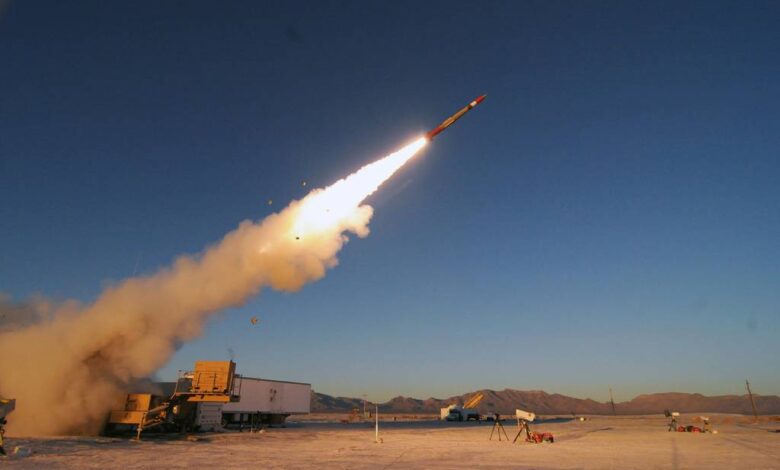PAC-3 MSE launched from virtual Aegis ship hits cruise missile target

A Patriot Advanced Capability-3 Missile Segment Enhancement missile launched from a virtual Aegis Weapon System hit a live target in a recent Lockheed Martin test executed in partnership with multiple U.S. military services.
The PAC-3 MSE was fired from an MK-70 containerized launch platform using Lockheed’s Virtualized Aegis Weapon System to intercept the target simulating a cruise missile, the company said in a statement May 20.
The test is the culmination of Lockheed’s effort, begun in 2017, to pursue an upgraded missile capability for the U.S. Navy that would allow it to avoid a typically lengthy and costly missile development schedule.
“The U.S. Navy has capability and capacity gaps against advanced threats at sea,” Tom Copeman, vice president of naval systems within Lockheed’s missiles and fire control business, told Defense News in an interview earlier this year. The Patriot missile is “a combat-proven weapon against advanced threats, against hypersonic [weapons],” he said.
The capability is “definitely complementary to what [the Navy has] today,” Shireen Melvin, director of integrated combat management within the company’s rotary and mission systems business, said in the same interview.
By the end of the year, Lockheed will have spent roughly $100 million on the PAC-3 MSE integration effort so far, Copeman noted.
The PAC-3 MSE, as the upgraded missile is known, already has a hot production line in Camden, Arkansas, that is currently ramping up to produce 550 missiles a year. The missile is typically fired from the U.S. Army’s Patriot air-and-missile defense system. Lockheed has plans to increase its production numbers as it replenishes the stockpile of missiles sent to Ukraine since Russia invaded over two years ago.
The Missile Defense Agency provided Lockheed with a small amount of funding early on to integrate PAC-3 MSE into its Aegis Ashore baseline capability. Aegis Ashore provides missile defense capability from a deckhouse on land. There is one operational Aegis Ashore in Romania and another in Poland that is expected to reach full operational capability soon.
That effort did not include a live-fire test, but rather a hardware-in-the-loop test in the fall of 2022 using Army launchers instead of Navy platforms at the Pacific Missile Range Facility.
Lockheed then invested internally to integrate PAC-3 MSE to be fired from Aegis ships.
In summer 2023, Lockheed proved it could integrate PAC-3 MSE missiles with the Aegis SPY-1 radar, an integrated air-and-missile defense sensor, aboard Aegis capable ships. There are nearly 100 SPY-1 radars aboard Aegis cruisers and destroyers.
The live-fire test now, “showcases Lockheed Martin’s commitment to developing mission-focused, integrated technology to keep those who serve ahead of evolving threats,” Copeman, said in the statement. “These systems could deliver a proven, Integrated Air and Missile Defense (IAMD) capability with growing capacity to the U.S. to help defend against advanced, maneuverable threats.”
The hope is the Navy or Defense Department will now choose to conduct further tests that could lead to an initial operational capability on a ship, Copeman said earlier this year.
“As of yet, that has not been funded by the DOD,” he said.
Jen Judson is an award-winning journalist covering land warfare for Defense News. She has also worked for Politico and Inside Defense. She holds a Master of Science degree in journalism from Boston University and a Bachelor of Arts degree from Kenyon College.







